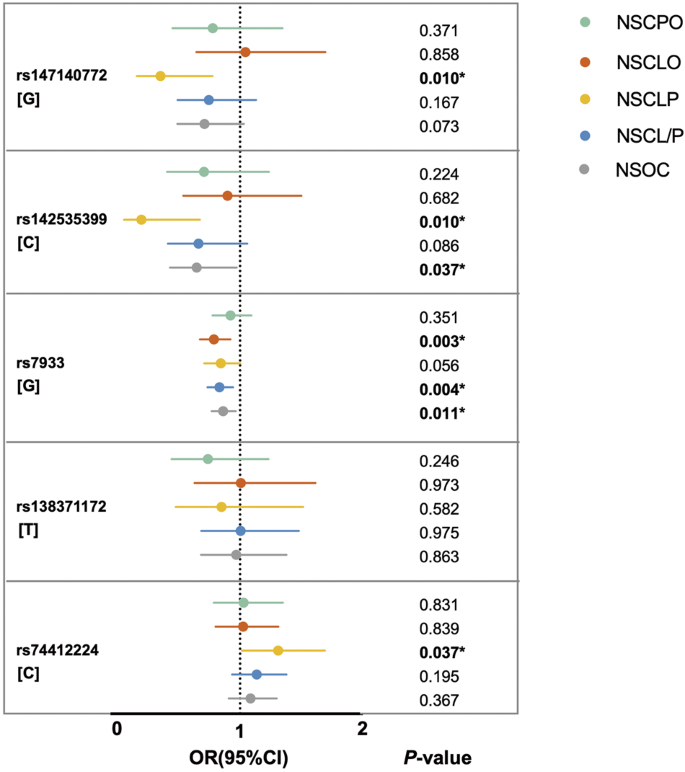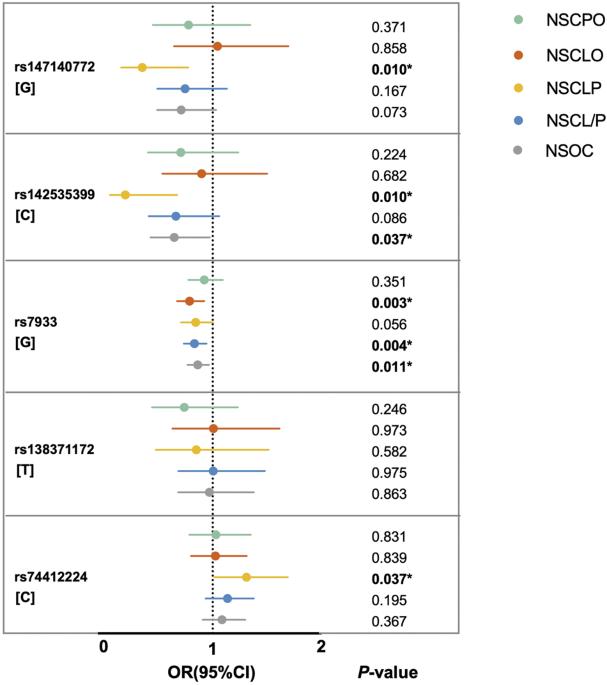Genetic association and functional validation of ZFP36L2 in non-syndromic orofacial cleft subtypes
IF 2.6
3区 生物学
Q2 GENETICS & HEREDITY
引用次数: 0
Abstract
Non-syndromic orofacial cleft (NSOC) is one of the most common craniofacial malformations with complex etiology. This study aimed to explore the role of specific SNPs in ZFP36L2 and its functional relevance in zebrafish models. We analyzed genetic data of the Chinese Han population from two previous GWAS, comprising of 2512 cases and 2255 controls. Based on the Hardy-Weinberg Equilibrium (HWE) and minor allele frequency (MAF), SNPs in the ZFP36L2 were selected for association analysis. In addition, zebrafish models were used to clarify the in-situ expression pattern of zfp36l2 and the impact of its Morpholino-induced knockdown. Via association analysis, rs7933 in ZFP36L2 was significantly associated with various non-syndromic cleft lip-only subtypes, potentially conferring a protective effect. Zebrafish embryos showed elevated expression of zfp36l2 in the craniofacial region during critical stages of oral cavity formation. Furthermore, Morpholino-induced knockdown of zfp36l2 led to craniofacial abnormalities, including cleft lip, which was partially rescued by the addition of zfp36l2 mRNA. Our findings highlight the significance of ZFP36L2 in the etiology of NSOC, supported by both human genetic association data and functional studies in zebrafish. These results pave the way for further exploration of targeted interventions for craniofacial malformations.


ZFP36L2 在非综合征口面裂亚型中的遗传关联和功能验证。
背景:非综合征性口面裂(NSOC)是最常见的颅面畸形之一,病因复杂。本研究旨在探索 ZFP36L2 中特定 SNPs 的作用及其在斑马鱼模型中的功能相关性:我们分析了之前两次全球基因组研究中中国汉族人群的遗传数据,包括 2512 例病例和 2255 例对照。根据哈代-温伯格平衡(HWE)和小等位基因频率(MAF),选择 ZFP36L2 中的 SNPs 进行关联分析。此外,还使用斑马鱼模型来阐明zfp36l2的原位表达模式以及Morpholino诱导敲除zfp36l2的影响:结果:通过关联分析,ZFP36L2中的rs7933与各种非综合征性唇裂亚型显著相关,可能具有保护作用。斑马鱼胚胎显示,在口腔形成的关键阶段,zfp36l2在颅面部区域的表达升高。此外,吗啉诱导的 zfp36l2 基因敲除会导致颅面部异常,包括唇裂,而添加 zfp36l2 mRNA 则可部分修复唇裂:我们的研究结果强调了ZFP36L2在NSOC病因学中的重要性,人类遗传关联数据和斑马鱼功能研究都支持这一观点。这些结果为进一步探索针对颅面畸形的干预措施铺平了道路。
本文章由计算机程序翻译,如有差异,请以英文原文为准。
求助全文
约1分钟内获得全文
求助全文
来源期刊

Journal of Human Genetics
生物-遗传学
CiteScore
7.20
自引率
0.00%
发文量
101
审稿时长
4-8 weeks
期刊介绍:
The Journal of Human Genetics is an international journal publishing articles on human genetics, including medical genetics and human genome analysis. It covers all aspects of human genetics, including molecular genetics, clinical genetics, behavioral genetics, immunogenetics, pharmacogenomics, population genetics, functional genomics, epigenetics, genetic counseling and gene therapy.
Articles on the following areas are especially welcome: genetic factors of monogenic and complex disorders, genome-wide association studies, genetic epidemiology, cancer genetics, personal genomics, genotype-phenotype relationships and genome diversity.
 求助内容:
求助内容: 应助结果提醒方式:
应助结果提醒方式:


